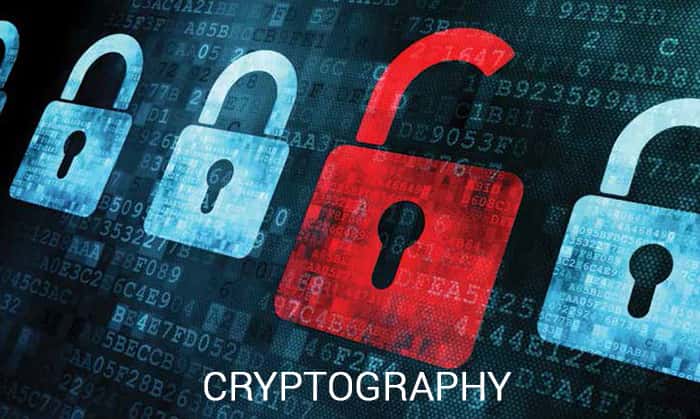Cryptography, the art and science of encoding and decoding information, has a rich and fascinating history that has shaped the way we communicate securely. In an age where digital communication reigns supreme, understanding the underlying principles of cryptography unveils a world filled with intrigue and complexity. Herein lies a compilation of mind-blowing facts about cryptography that may leave you astounded—some you may have never encountered before.
To begin with, one must acknowledge that the term “cryptography” derives from the Greek words “kryptos,” meaning hidden, and “grapho,” meaning to write. This etymology encapsulates the essence of the discipline. From its origins as a means of safeguarding state secrets in antiquity to its present-day applications safeguarding personal data, cryptography spans a mesmerizing timeline.
One extraordinary historical aspect concerns the use of cryptography in warfare. During World War II, the Allies employed the Enigma machine, a sophisticated encryption device utilized by the German military. The machine’s mechanical design allowed for a staggering 150 quintillion possible combinations, rendering conventional decryption methods futile. It was only through the ingenuity of mathematicians and cryptanalysts, including the renowned Alan Turing, that Allied forces were able to crack the Enigma’s code and gain a pivotal edge in battle.
Transitioning to contemporary settings, the advent of public key cryptography represents a game-changing paradigm within the field. In contrast to traditional cryptographic systems that rely on a single shared key, public key cryptography utilizes two mathematically linked keys: a public key, which can be disseminated broadly, and a private key, known only to the owner. This groundbreaking method, popularized by figures such as Whitfield Diffie and Martin Hellman, has revolutionized secure communications, enabling the establishment of secure channels over insecure mediums such as the internet.
Another riveting facet of cryptography is the concept of hashing. Hash functions convert input data of arbitrary size into a fixed-size string of characters, effectively serving as unique digital fingerprints. This functionality is paramount in ensuring data integrity, as even the slightest alteration in the original data will yield a drastically different hash output. Prominently used in blockchain technology, hash functions ensure that transactions remain tamper-proof, thereby fortifying trust in decentralized systems.
Moreover, the principles of cryptography are not limited to mere data protection; they extend into the realms of economics as well. The emergence of cryptocurrencies, such as Bitcoin, has birthed an entirely new economic landscape predicated on cryptographic methodologies. The decentralized nature of cryptocurrencies is primarily maintained through complex cryptographic algorithms, which validate transactions and secure the network against fraudulent activities. This innovation offers a new model for financial transactions, presenting both unparalleled opportunities and distinct challenges.
A lesser-known notion in cryptography is the phenomenon of steganography, which speaks to the art of hiding messages within other non-secretive data. While cryptography obscures the content of a message, steganography conceals the existence of the message altogether. For instance, digital images can hold hidden messages within their pixels, rendering them invisible to the naked eye. This dual layer of security has profound implications in clandestine communications, particularly in scenarios where the mere presence of a message might attract scrutiny.
Unraveling further into the labyrinth of cryptography, one might encounter quantum cryptography—an emergent area that leverages the principles of quantum mechanics to enhance data security. Quantum key distribution (QKD) provides a method by which cryptographic keys can be exchanged with absolute security against eavesdropping. This groundbreaking approach operates under the premise that any attempt at interception will inevitably alter the quantum state of the particles involved, alerting the communicating parties to potential security breaches.
As we navigate this digital age, the importance of cryptography cannot be overstated. A staggering number of cyberattacks occurs daily, with hackers employing an arsenal of techniques to siphon sensitive information. However, the ongoing evolution of cryptographic solutions continues to arm individuals and organizations with the means to protect themselves. Two-factor authentication (2FA), for instance, has emerged as a critical tool in safeguarding online accounts, adding an additional verification layer beyond mere passwords. This functionality underscores the necessity of employing multifaceted strategies in the fortification of digital assets.
Lastly, consider the ethical dimensions of cryptography. As the battle for privacy intensifies, cryptographers often find themselves at the forefront of contentious debates regarding the balance between security and surveillance. Governments and agencies advocate for backdoor access to encrypted communications to thwart criminal activities, while cryptographers argue that such measures undermine the very fabric of privacy. This ethical conundrum manifests in various social and political dialogues, fostering a discourse that weighs public safety against individual liberties.
In conclusion, cryptography serves as an intricate tapestry interwoven with history, technology, and ethics. As one delves deeper into its multifaceted aspects—ranging from wartime communication to the marvels of modern cryptocurrency—the relevance of cryptography becomes increasingly evident. It is a field that not only demonstrates the ingenuity of human thought but also invites ongoing discourse as technology evolves. Indeed, the intersection of cryptography with our daily lives should not be overlooked; it is a cornerstone of security in our rapidly changing world.








Leave a Comment